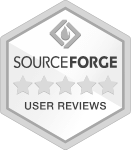- Blog
- Top 6 Marketing Tips We’ve Learned From Analyzing 25+ DTC Brands
Top 6 Marketing Tips We’ve Learned From Analyzing 25+ DTC Brands
-
Nikolett Lorincz
- Marketing
- 6 min read
Table of Contents
In recent years, we’ve taken a deep dive into the marketing efforts of 27 leading ecommerce and DTC brands. We’ve shared their marketing tactics and strategies in articles, and now, we’re bringing you the cream of the crop.
From these detailed case studies, we’ve distilled the top six marketing strategies that consistently drive success for these brands. These insights will help you create a comprehensive marketing strategy for your own business.
Let’s jump right in!
Tip #1: Find the right target audience and learn about their needs
Many ecommerce businesses have shown that pinpointing the right target audience and understanding their needs and pain points is crucial. Knowing how to communicate effectively with this audience can make or break a brand.
Take Stanley, for example. Traditionally, Stanley had catered to workmen and outdoorsmen. When they launched the Quencher in 2016, it was a flop, leading them to discontinue the product in 2019.
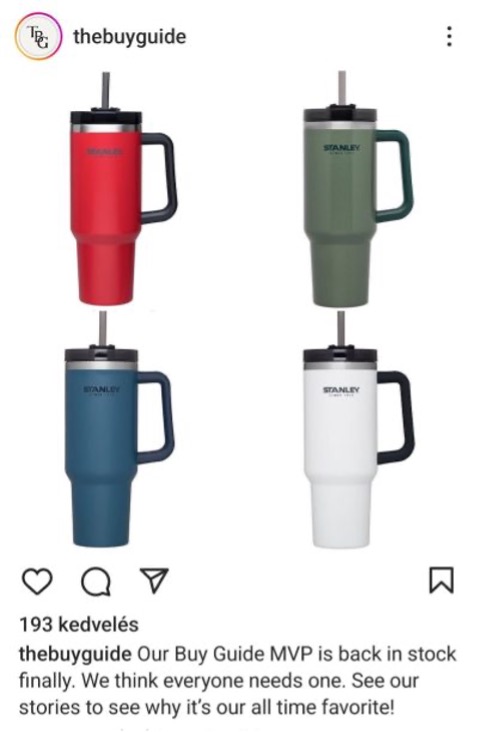
However, an unexpected ally emerged: The Buy Guide, an online shopping blog run by three moms. They loved the Quencher and promoted it to their followers, spotlighting an untapped market—women.
The Buy Guide’s feedback was direct: Stanley was marketing the cup to the wrong audience. In June 2020, Stanley relaunched the Quencher in pastel colors (targeting women) and it sold out within three weeks.
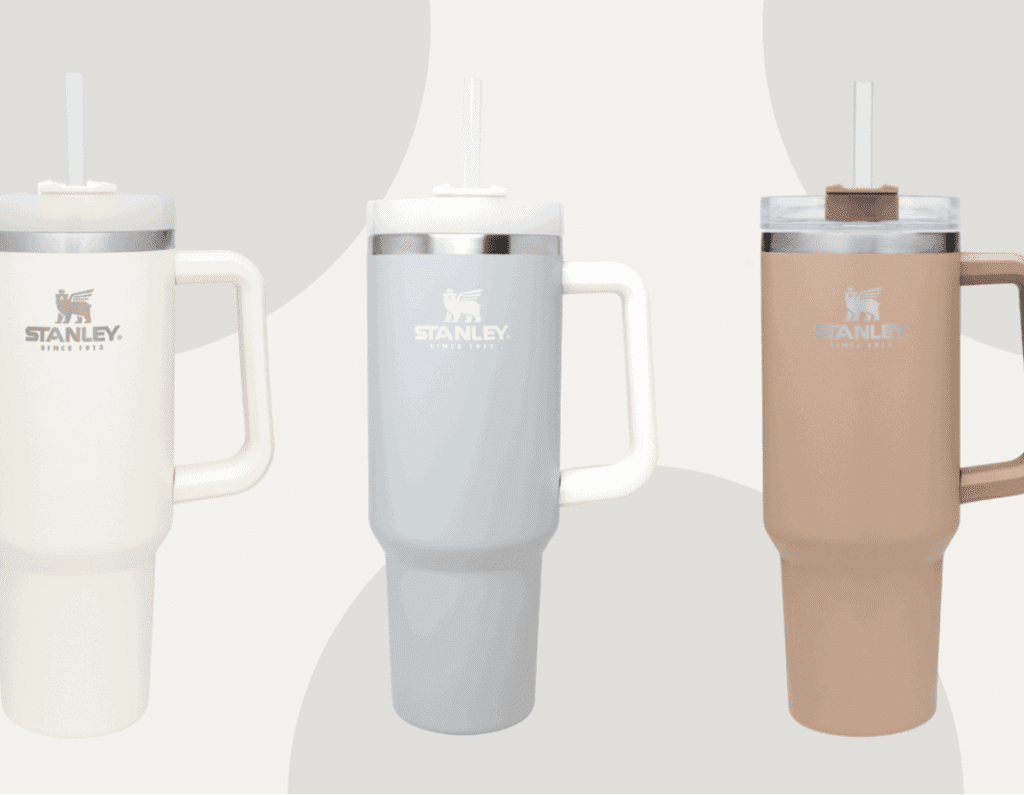
Loop Earplugs offers another excellent example. Initially targeting the nightlife scene, Loop was forced to pivot during the pandemic.
They expanded their market to include parents, noise-sensitive individuals, and those seeking focus or relaxation in everyday life.
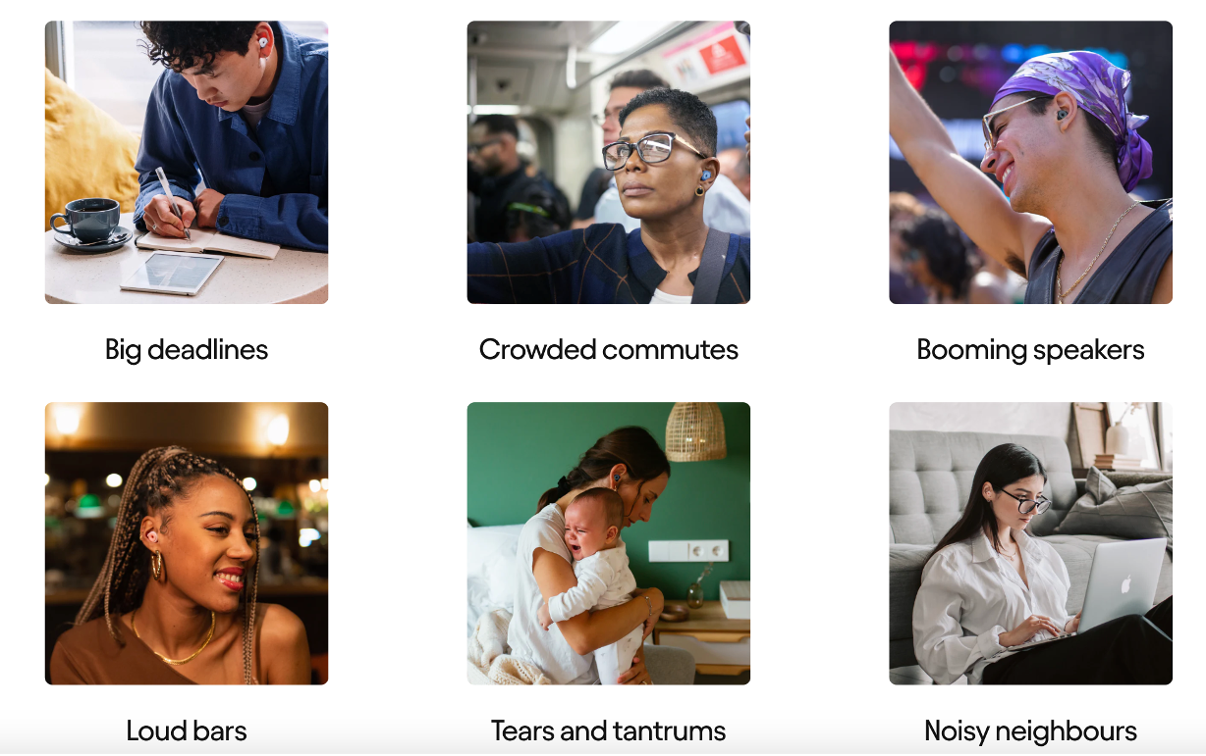
This shift not only helped them survive the pandemic but also fueled their growth.
Athletic Brewing’s approach underscores the importance of understanding your customers’ problems. As CMO Andrew Katz explained, the company didn’t aim to create a product for everyone.
Instead, their marketing campaigns are laser-focused on a specific demographic: “young, modern, healthy adults,” predominantly within the 24 to 44 age range. This targeted strategy ensures their messages resonate deeply with the right audience.
Julie Mathers, founder of Flora & Fauna, noted that many first-time entrepreneurs neglect crucial market research. Understanding whether your new idea is compelling enough to make customers switch to your brand is vital.
This requires thorough research into your target audience’s needs and preferences. After all, your brand needs to resonate with these customers in order to succeed.
In essence, finding and understanding your target audience is the foundation of a strong marketing strategy.
Tip #2: Generate demand with well-targeted ads
Let’s dive into some advertising strategies from top ecommerce brands that you can apply to your own business if you want to increase brand awareness.
Successful DTC brands understand that effective advertising isn’t confined to just one platform. They cast a wide net to reach their audience wherever they are.
Take Loop Earplugs, for example. They leverage the expansive reach of Facebook, Instagram, TikTok, and Google, ensuring they connect with their audience on multiple fronts. By not limiting themselves to a single platform, they maximize their visibility and engagement.

Experimenting with different ad formats is another key strategy. AG1 uses a mix of videos and images to capture attention and convey their message.
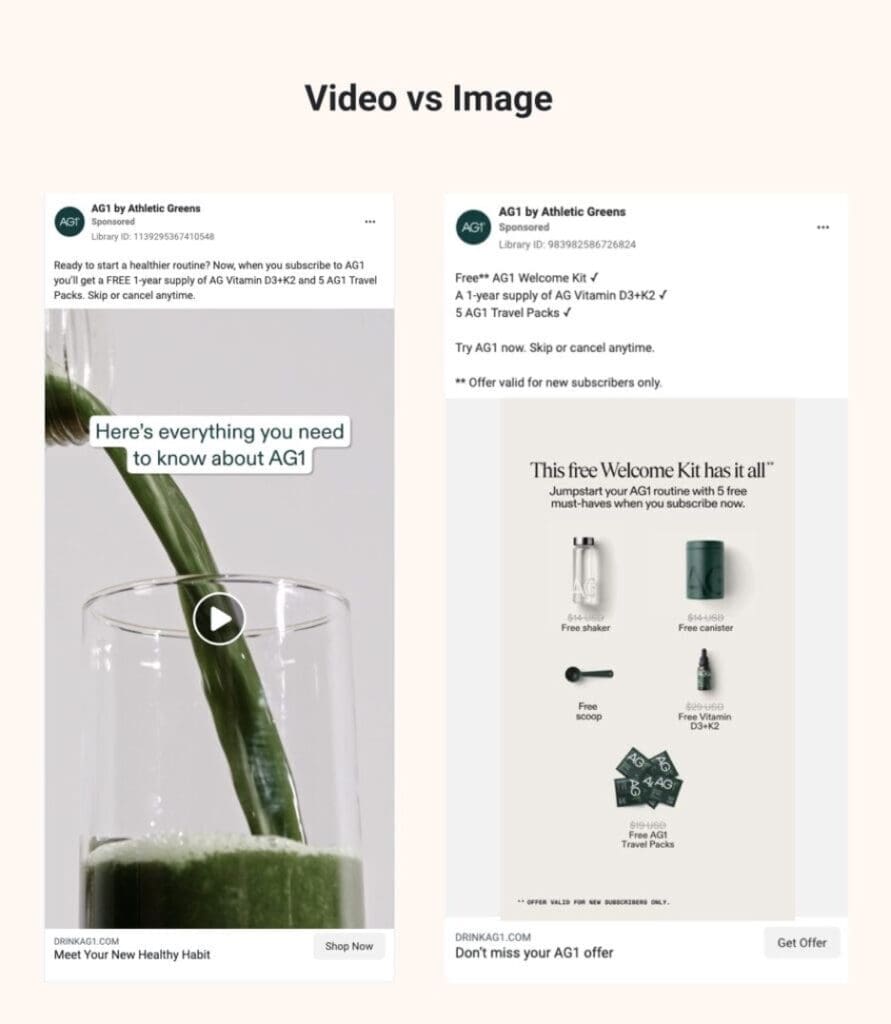
Videos, in particular, can be highly engaging.
BÉIS Travel has seen great success with walkthrough videos where the founder details the product’s features. These videos perform exceptionally well because consumers appreciate seeing the product in action.
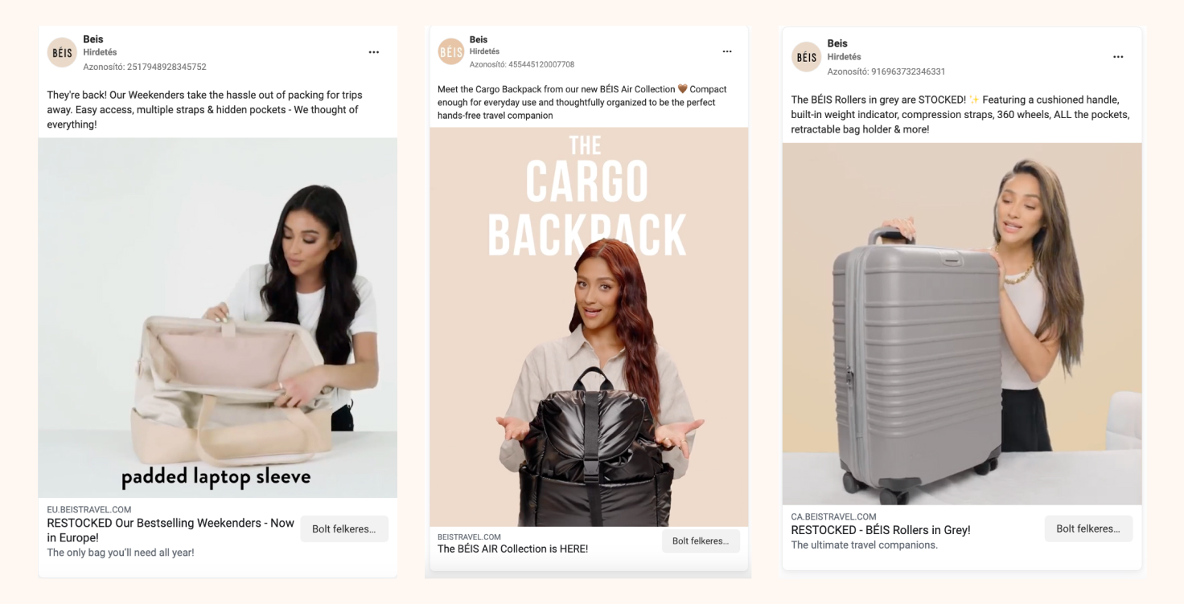
Incorporating social proof in ads can also be a game-changer.
Caraway, for instance, often includes customer testimonials and reviews in their ads. This approach helps to alleviate any concerns first-time customers might have by showcasing the satisfaction of existing users.
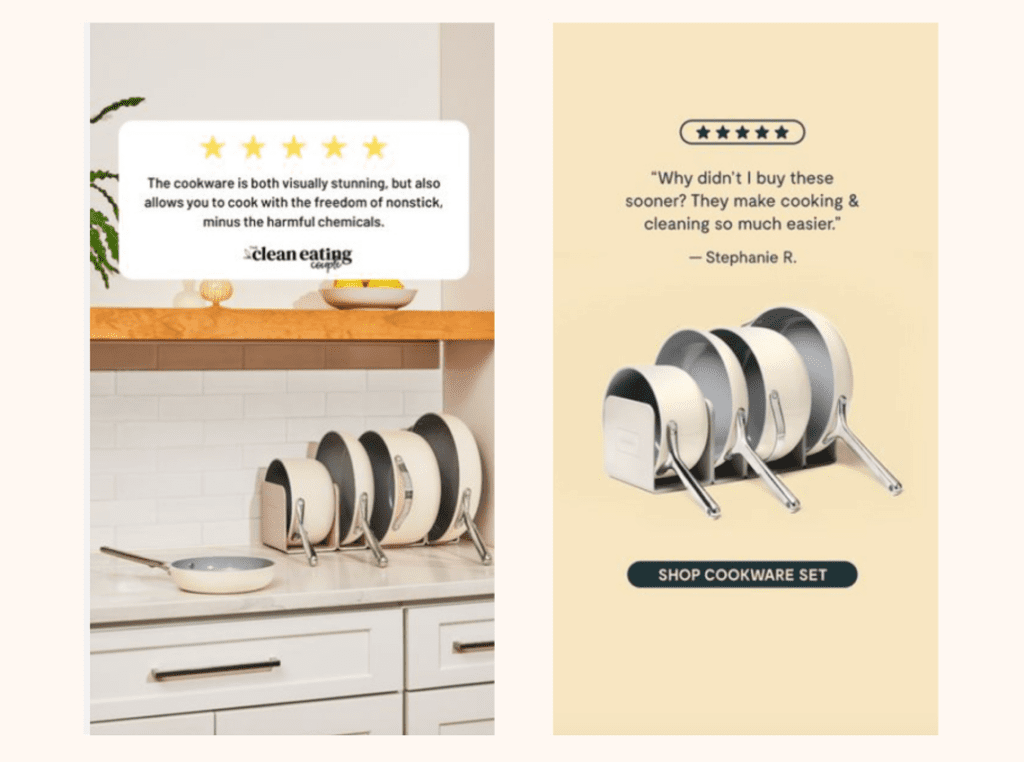
Search ads are another powerful tool.
Consider running ads that show up in the search results for your competitors, a tactic employed by Alo Yoga. This can capture potential customers who are already interested in similar products, steering them towards your offerings instead.
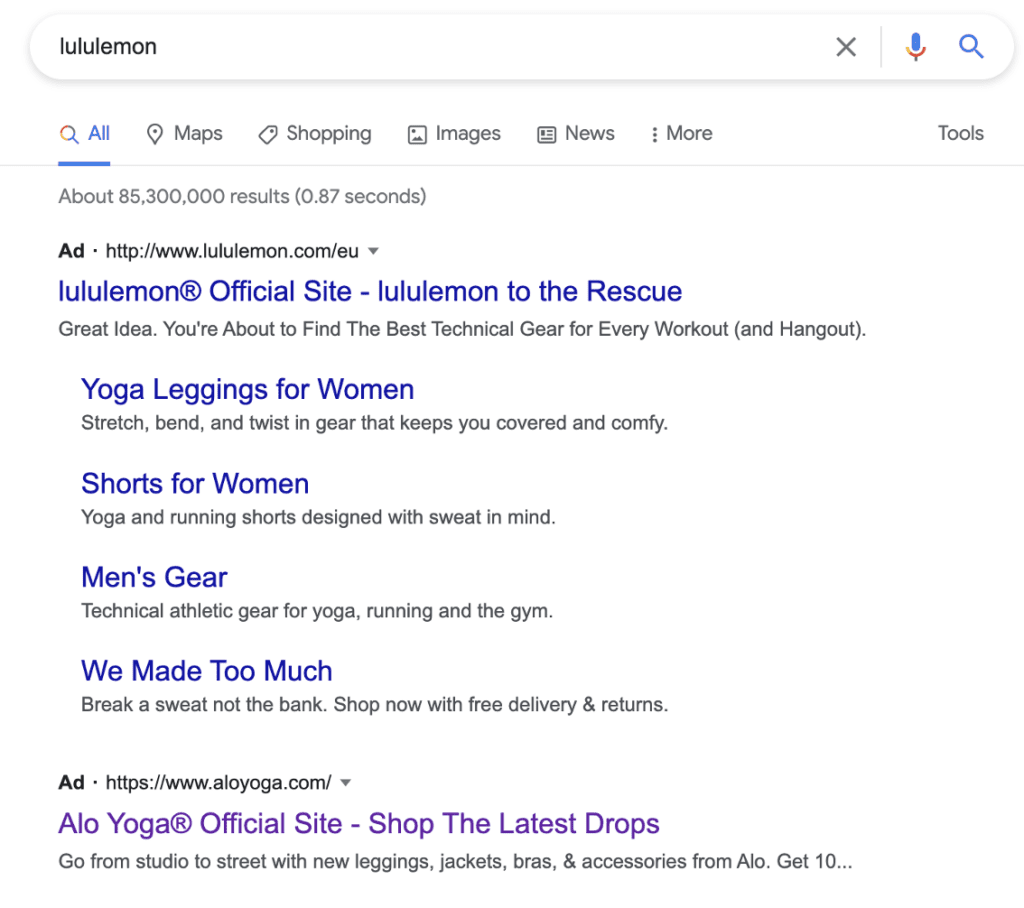
Additionally, ensure your ads make it easy to understand your product at a glance.
Waterdrop faced a challenge with their packaging, which didn’t clearly convey exactly what the product was. They discovered that showing the product in use, with glasses or bottles, helped people grasp its purpose quickly.
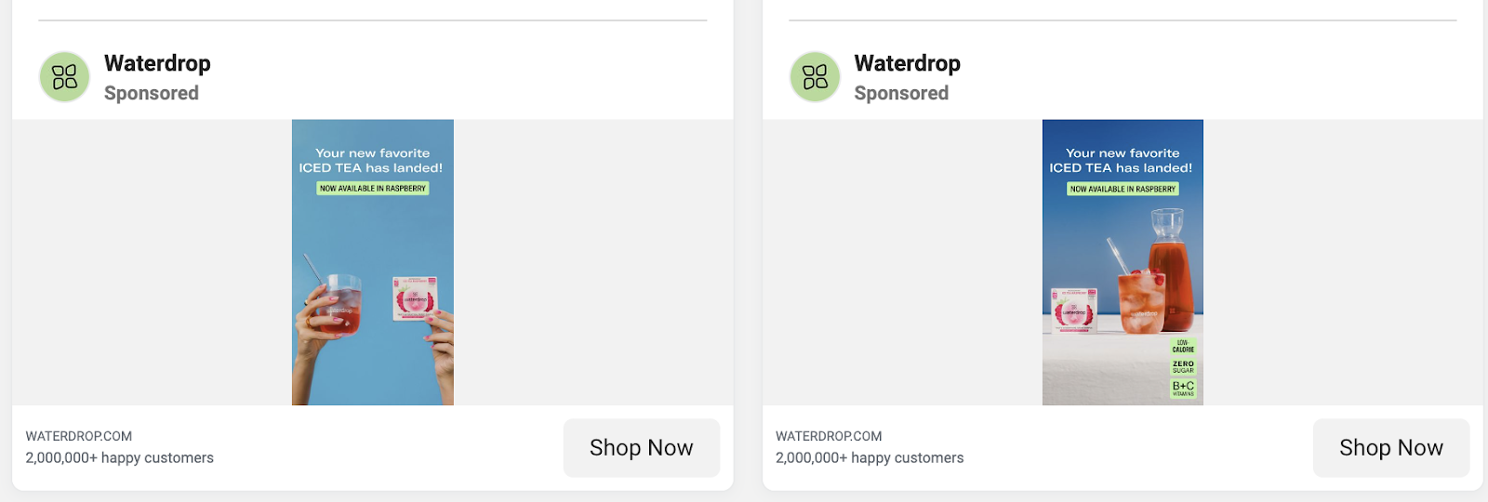
By using these advertising strategies, you can generate demand more effectively and connect with your audience in meaningful ways.
Tip #3: Build relationships with influencers
Influencer marketing has become a cornerstone strategy for many ecommerce brands, and doing it right can build brand awareness and significantly boost credibility.
Let’s explore how to make influencer marketing work for you by looking at some successful examples.
Gymshark was one of the pioneers of influencer marketing, long before it became a buzzword. Back in 2012, they sent clothing samples to their favorite fitness stars on social media. These influencers, later known as “Gymshark athletes,” promoted the brand organically.
This invite-only program means that aligning with Gymshark’s values and regularly tagging their products can catch the brand’s attention, leading to potential sponsorship.
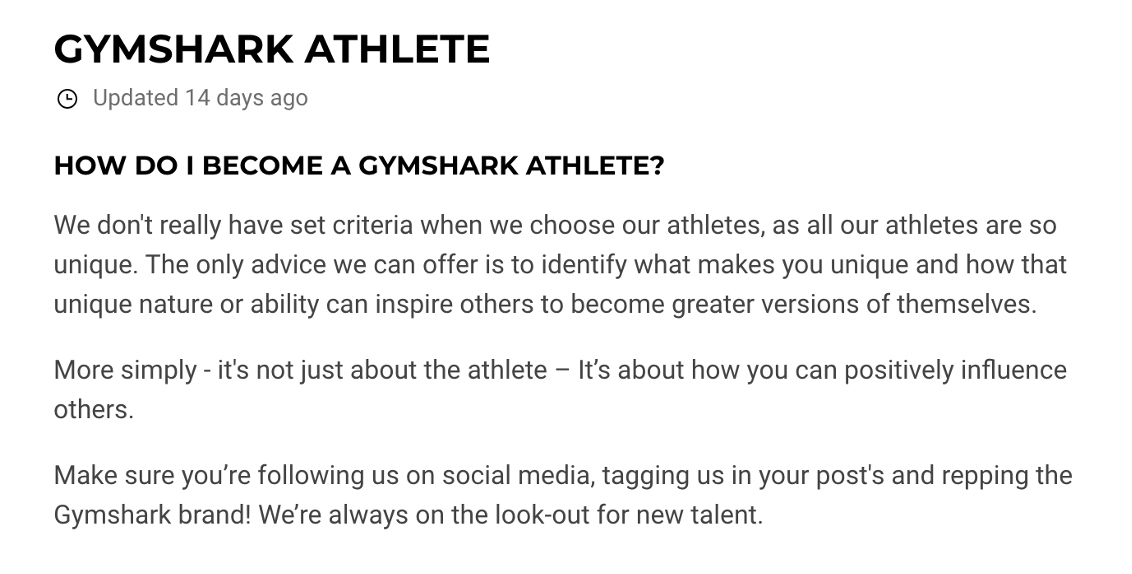
A great way to ensure success with influencer marketing is by establishing mutual benefits.
Stanley offers micro-influencers a 10% commission per sale through their affiliate program. This incentivizes influencers to promote Stanley products, driving sales and increasing brand exposure.
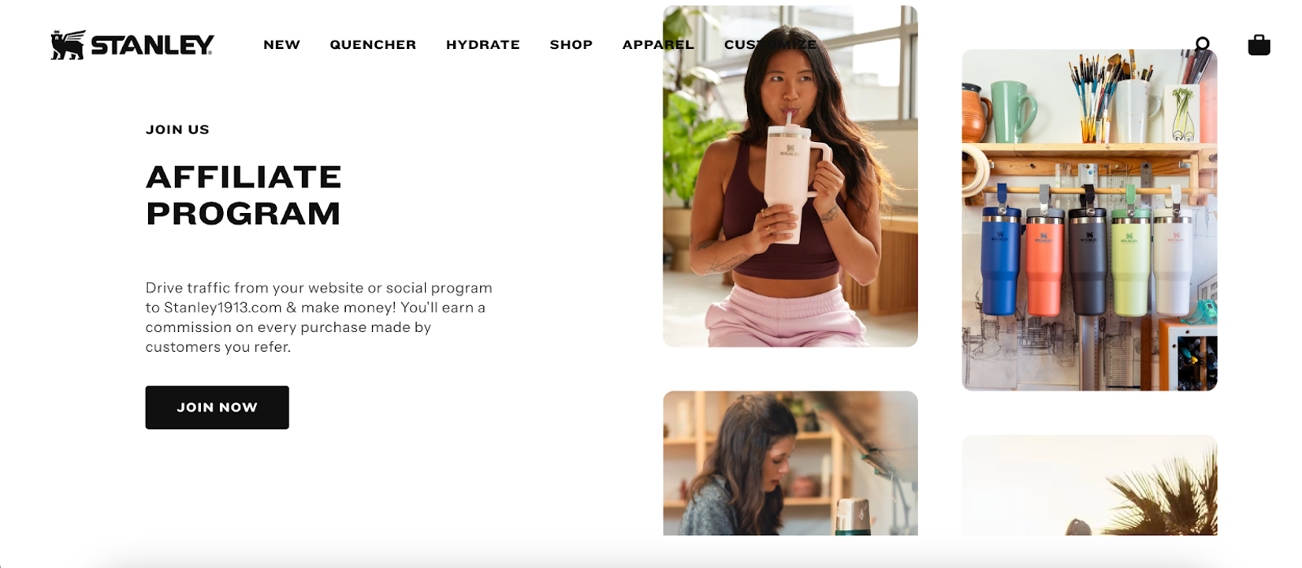
Similarly, AG1 offers a 20% commission per sale to their affiliate partners, motivating influencers to push their products.
And AfG1 goes a step further by creating special deals and landing pages for top influencers. For instance, visitors arriving from The Tim Ferriss Show podcast see a personalized message and photo of Tim Ferriss, enhancing trust and boosting the appeal of the product.
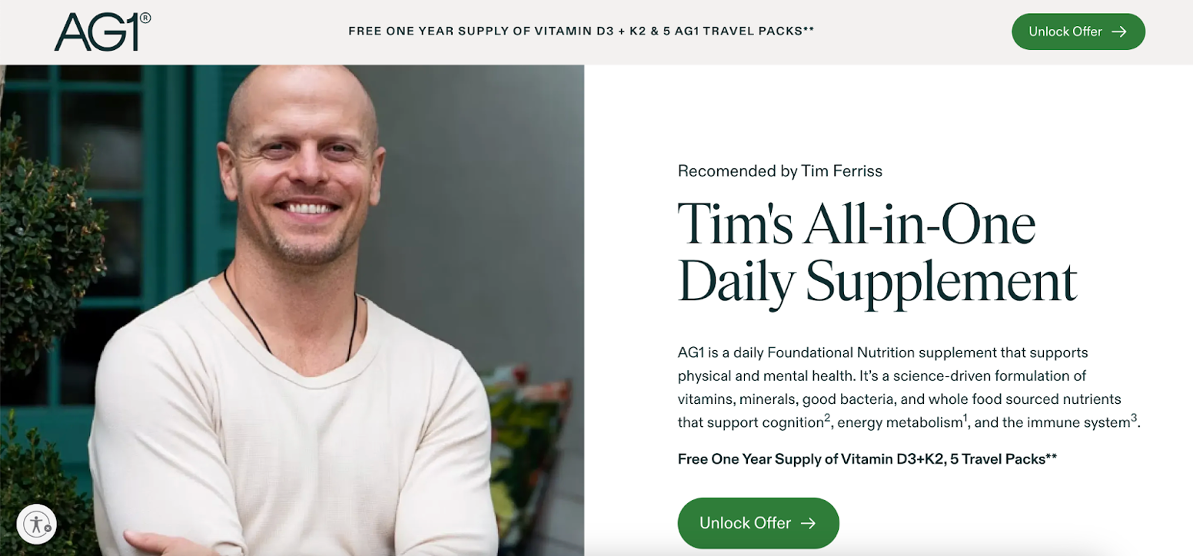
Choosing influencers who are popular with your target audience and whose values align with your brand is crucial.
Bubble Skincare tapped into TikTok’s immense popularity by partnering with influencers like Hyram Yarbro, a skincare blogger with over 6.1 million followers.
By engaging with influencers who resonate with their audience, Bubble Skincare built a strong online community and significantly boosted their brand’s visibility.
Athletic Brewing is another great example. They partner with influencers like pro football player J.J. Watt and pro surfer Malia Manuel. These relationships are highlighted on their homepage, demonstrating the importance of authentic endorsements.
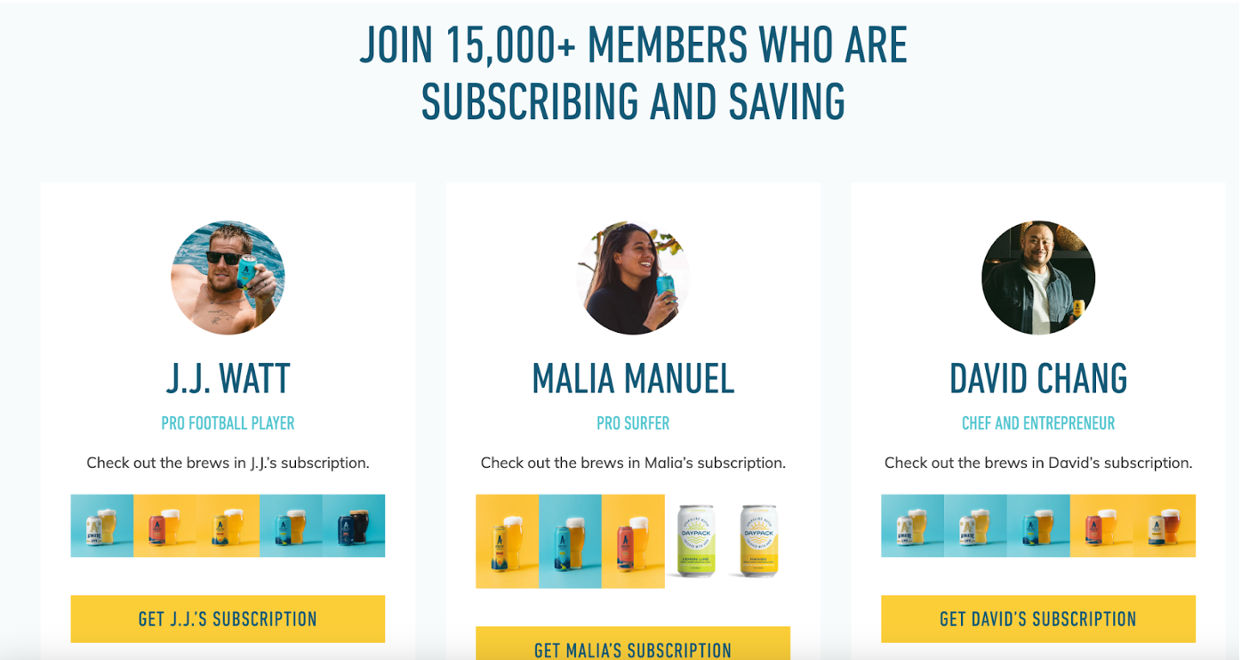
Alo Yoga also excels at building meaningful relationships. Beyond sponsoring wellness influencers, they focus on connecting with yoga instructors through their “Pro Program.”
This program includes over 4,000 yoga teachers and professionals who regularly post and tag Alo Yoga on social media platforms. When potential customers see trusted yoga instructors endorsing the brand, it carries significant weight.

Tip #4: Focus on SEO
Search engine optimization (SEO) is a crucial marketing strategy that allows you to get discovered by potential customers. It helps your website rank higher in search results, driving organic traffic and reducing reliance on paid ads.
Bearaby is a prime example of how an effective SEO strategy can boost sales. They observed that while their sales spike during the holidays, so do advertising costs. By implementing a strong SEO strategy, Bearaby leverages organic traffic to reduce their reliance on expensive holiday ads.
They target various stages of the buyer journey with SEO: while they rank for bottom-of-the-funnel keywords like “Bearaby,” they also capture middle-of-the-funnel and top-of-the-funnel traffic. These articles attract potential customers early in their research process.
Within their blog posts, Bearaby includes relevant product mentions and embedded promos that entice readers to learn more about their products. This strategy helps them convert early-stage visitors into customers by raising awareness about their offerings.
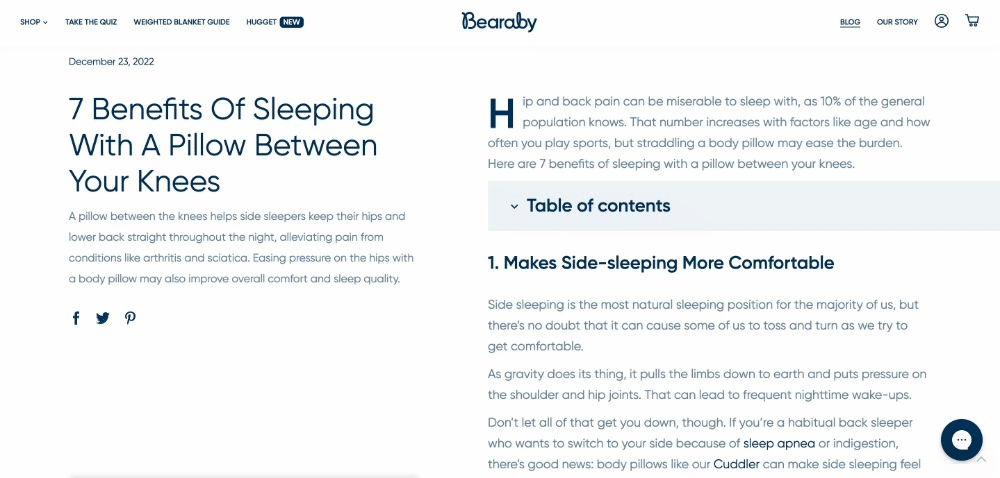
Casper excels at SEO by focusing on content that addresses common customer questions about mattresses.
Their blog covers a wide range of topics, from getting the perfect rest to comparing mattress sizes and guides on how to choose the right mattress. By providing valuable information, Casper attracts visitors who are in various stages of the buying process, establishing themselves as a trusted resource.

The Farmer’s Dog also harnesses the power of SEO and content marketing to educate dog owners about the benefits of fresh food for their pets.
Their blog covers keywords like “dog throwing up yellow” and “how to potty train a puppy,” targeting dog owners in search of advice. By positioning their blog as an authoritative source, they build trust with potential customers.
They further incentivize conversions by offering a 50% discount on the first trial purchase.
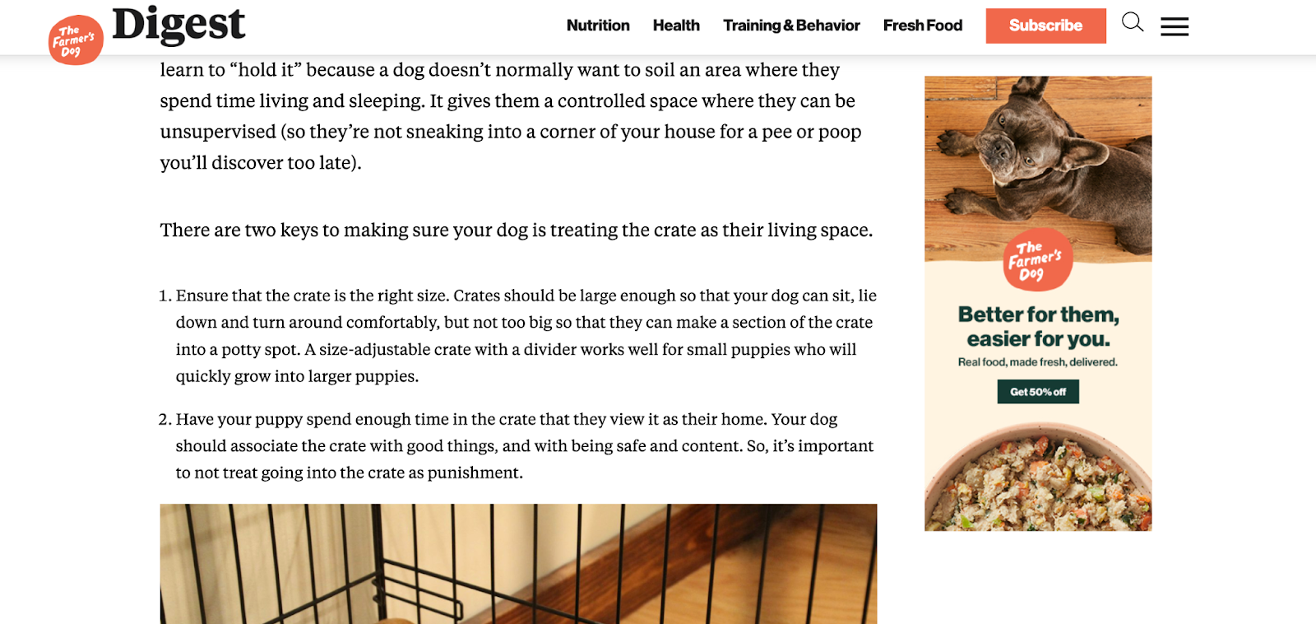
Dollar Shave Club is another brand that excels at SEO.
Their unique, humorous “Shameless Plug” banner, which functions as a call-to-action (CTA) across all their articles, effectively encourages visitors to engage with their products.
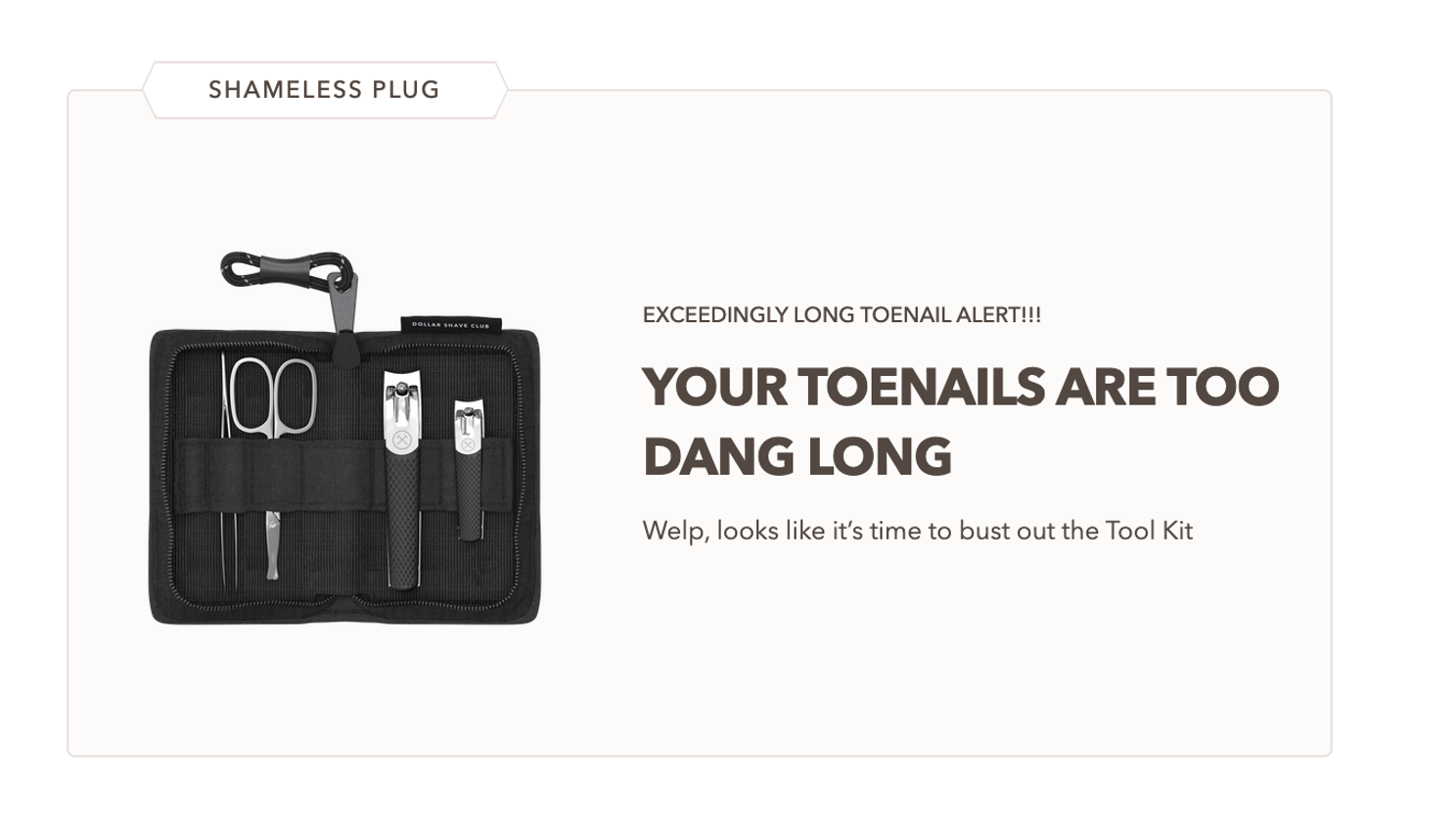
Focusing on SEO is essential for attracting organic traffic and reducing advertising costs.
By targeting keywords relevant to different stages of the buying journey and providing valuable content, you can establish your brand as a trusted resource. This not only draws potential customers to your site but also helps convert them into loyal buyers.
Use informal blog posts, educational content, and strategic CTAs to build a solid SEO strategy.
Tip #5: Use a quiz to collect data and personalize recommendations
Incorporating a quiz into your marketing strategy is a smart move in online marketing. Quizzes help first-time customers navigate your products and find the best fit for their needs, making the shopping experience more personalized and efficient.
Let’s explore some standout examples of how top brands use quizzes effectively.
Loop Earplugs features a quiz as a secondary call-to-action on their homepage. This quiz asks specific questions about the user’s situation and preferences, providing a tailored product recommendation based on the answers.
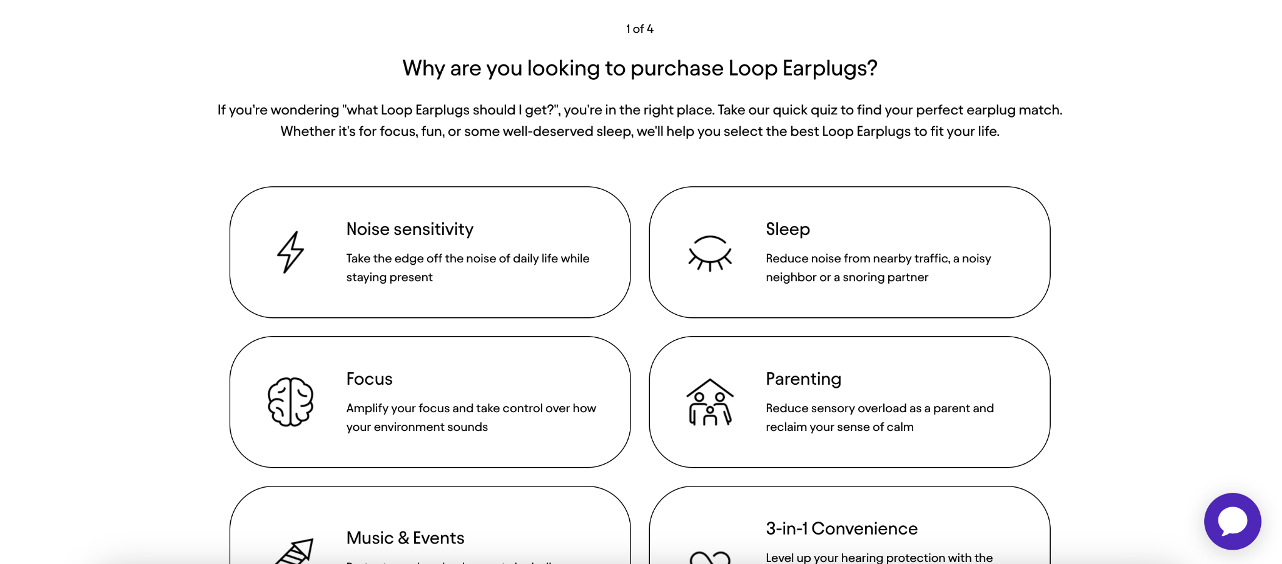
This personalized approach not only reduces the time to purchase but also instills confidence in the user’s choice. Implementing this quiz led to a 5.9% increase in conversions for new users.
AG1 uses a popup to promote their quiz, ensuring it captures visitors’ attention as they scroll down the homepage. This strategic placement maximizes visibility and encourages engagement at just the right moment.
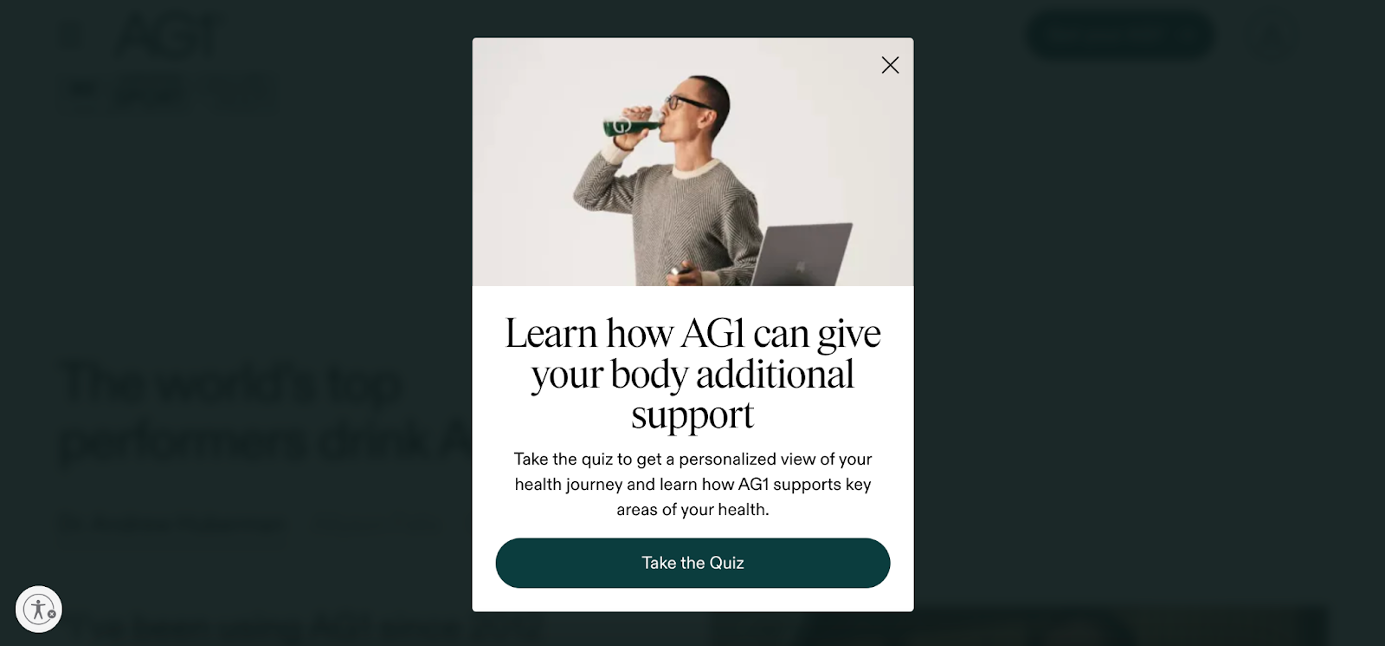
At the end of the quiz, AG1 offers personalized product recommendations based on the user’s responses, enhancing the likelihood of a purchase.
Bubble Skincare offers a unique approach with their Skin School quiz.
This quiz doesn’t require an email signup and doesn’t push Bubble Skincare products directly. Instead, it provides general information and tips on ingredients to look for, regardless of the brand. This educational focus builds trust and helps users make informed decisions.
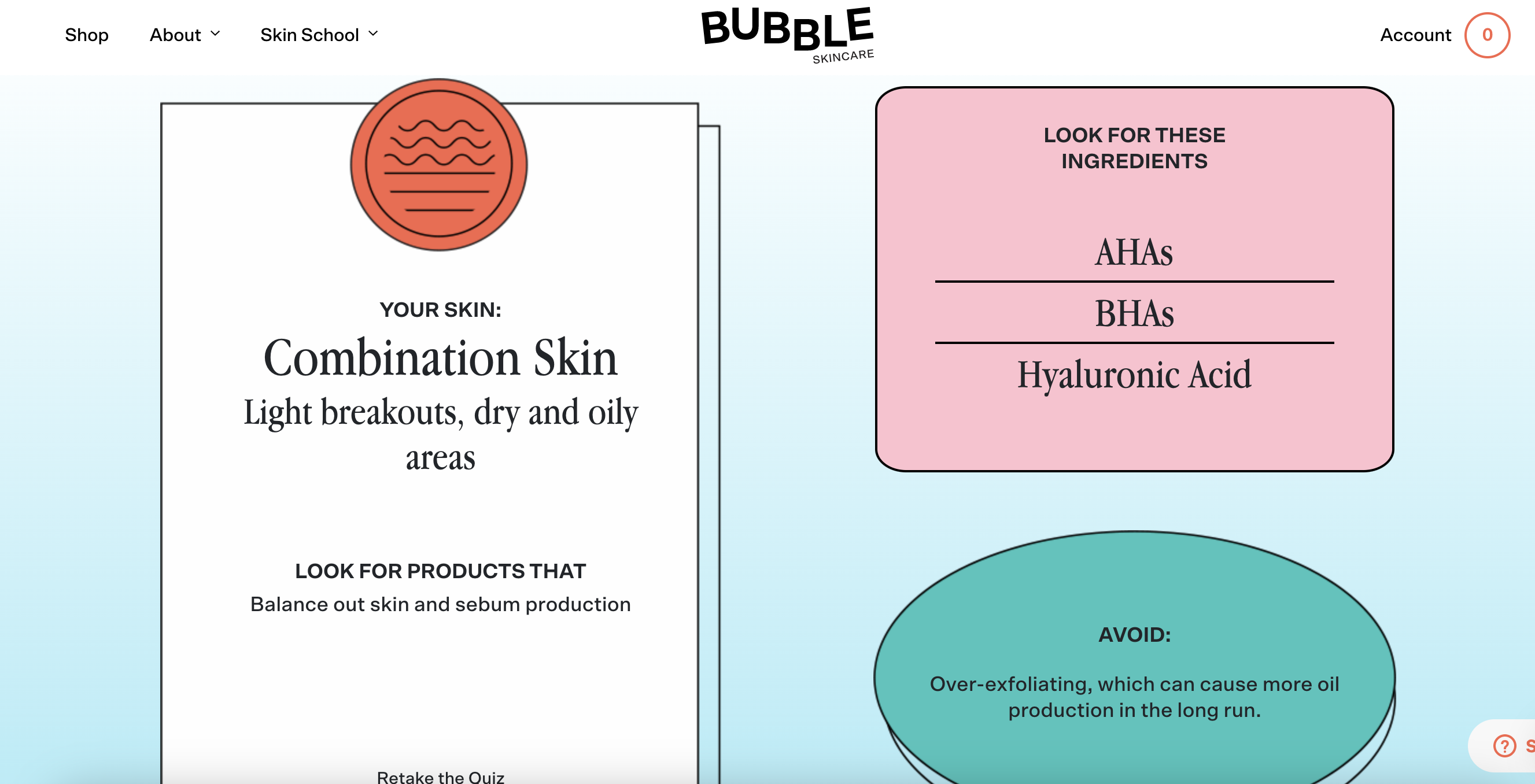
Bearaby also uses a quiz to assist customers with finding the right product. By asking targeted questions, Bearaby ensures that users receive recommendations that best suit their needs, simplifying the shopping process.
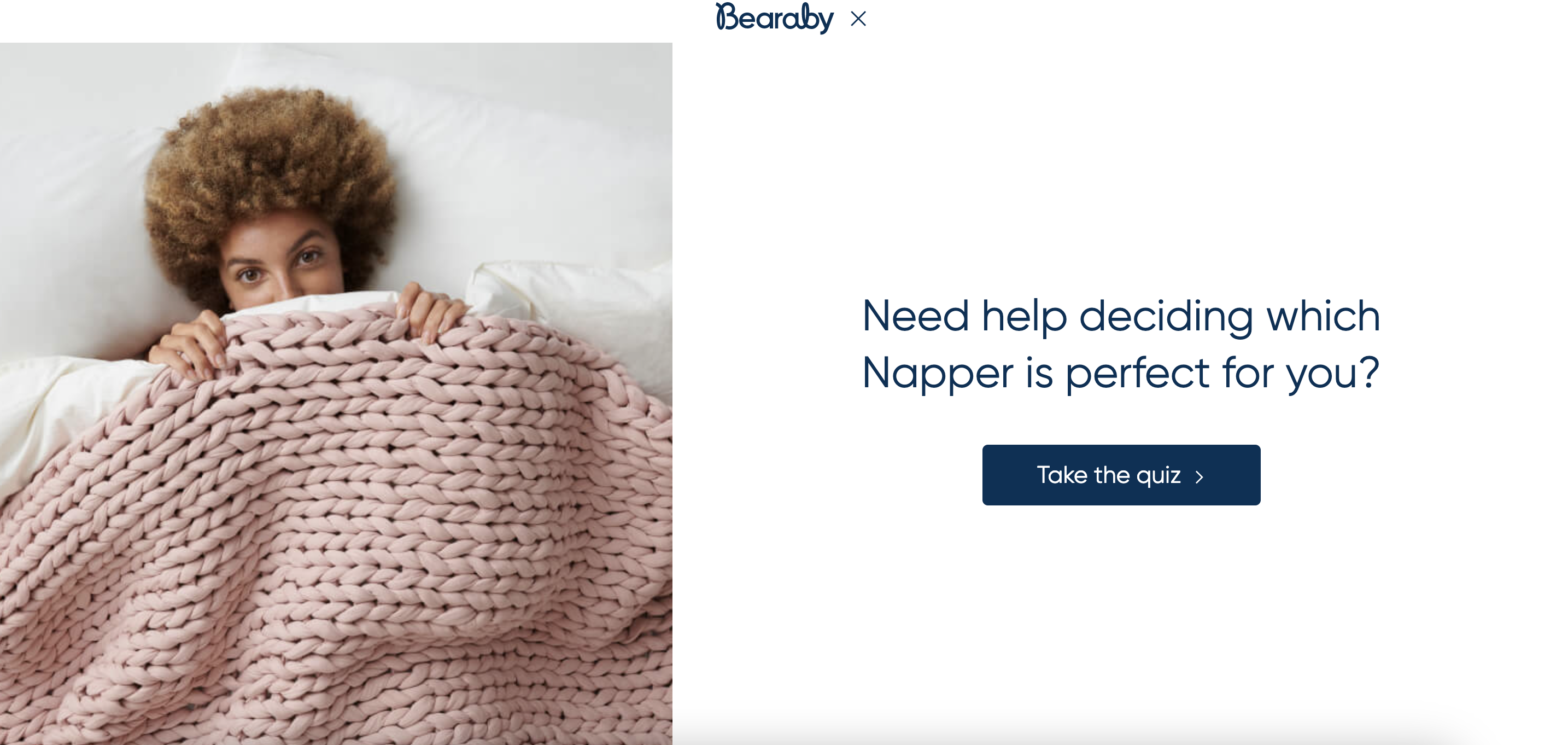
Unlike other brands that use a quiz as a secondary CTA, Care/of places the quiz at the center of their website experience.
Their primary goal is to get visitors to take the quiz, which drives personalized product recommendations and enhances customer engagement from the get-go.
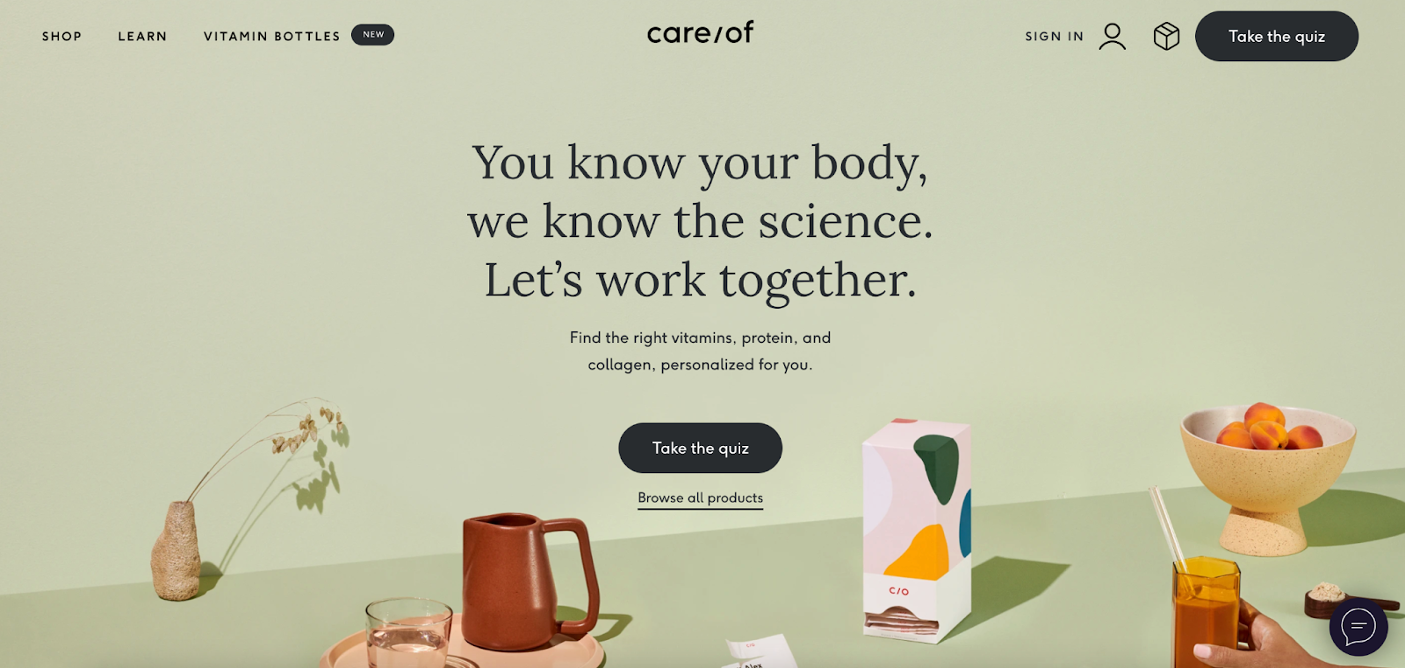
Sephora offers numerous quizzes designed to help customers find the products they’re looking for.
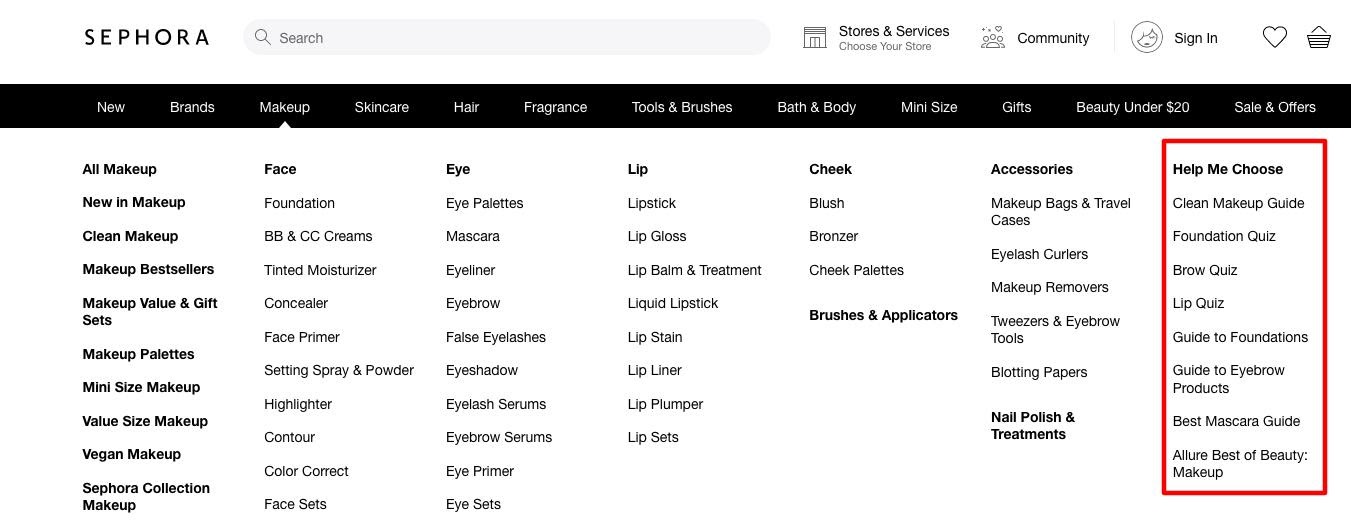
After completing a quiz, customers receive a list of product recommendations along with ratings from other users. This additional social proof helps customers make informed purchasing decisions and increases their confidence in the recommended products.
Adding a quiz to your marketing strategy not only simplifies the shopping experience for first-time customers but also provides you with valuable data you can use to personalize your communications.
Whether you focus on educating users like Bubble Skincare, or prioritize the quiz as your main CTA like Care/of, quizzes can significantly enhance user engagement and drive conversions.
By tailoring recommendations and building trust, you can create a more personalized, enjoyable, and effective shopping experience for your customers.
Tip #6: Build an email & SMS list with a user-friendly popup
Email marketing remains one of the most effective strategies, while SMS marketing is rapidly gaining traction due to its high engagement rates.
Popups are an excellent tool to build both your email and SMS lists, but it’s crucial to use them in a way that doesn’t annoy your visitors.
Here’s how top brands are using popups effectively.
Waterdrop uses an email popup with a teaser to attract new subscribers.
When visitors land on the Waterdrop website, they’re greeted with a subtle yet enticing popup offering 15% off their first purchase in exchange for subscribing to the email newsletter.
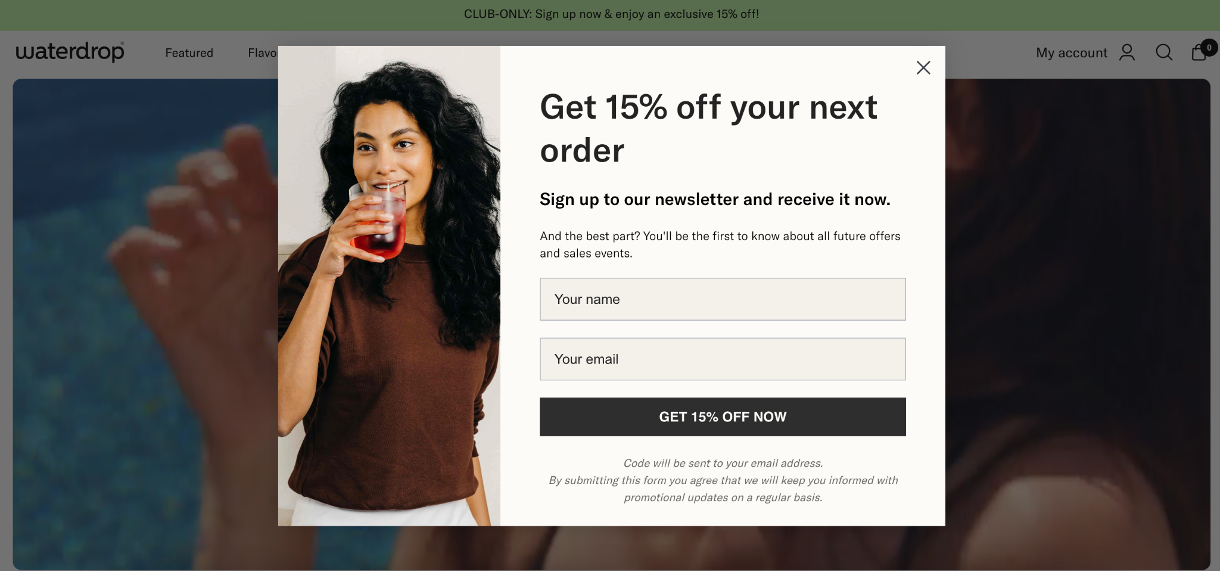
If visitors close the popup without subscribing, a teaser remains visible at the bottom left corner of the screen, keeping the offer in sight in case they change their minds.
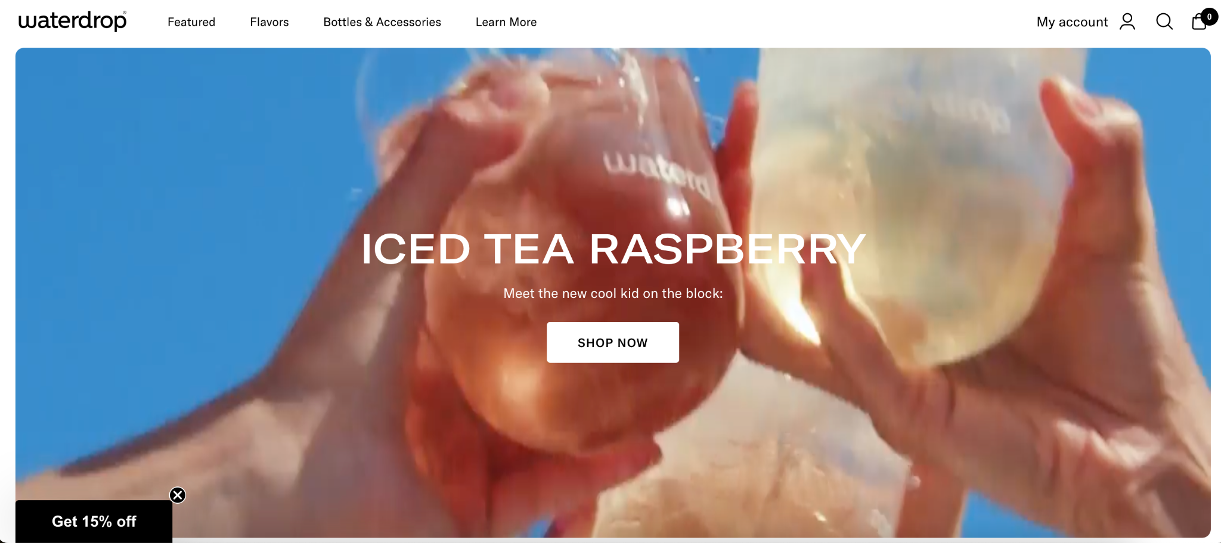
Stanley employs a two-step popup strategy to capture both email addresses and phone numbers from new visitors.
Initially, the popup prompts users to enter their email address for regular email communications. Once they do, the popup transitions to the second step, asking for a phone number. This method ensures a higher rate of data collection for both marketing channels.
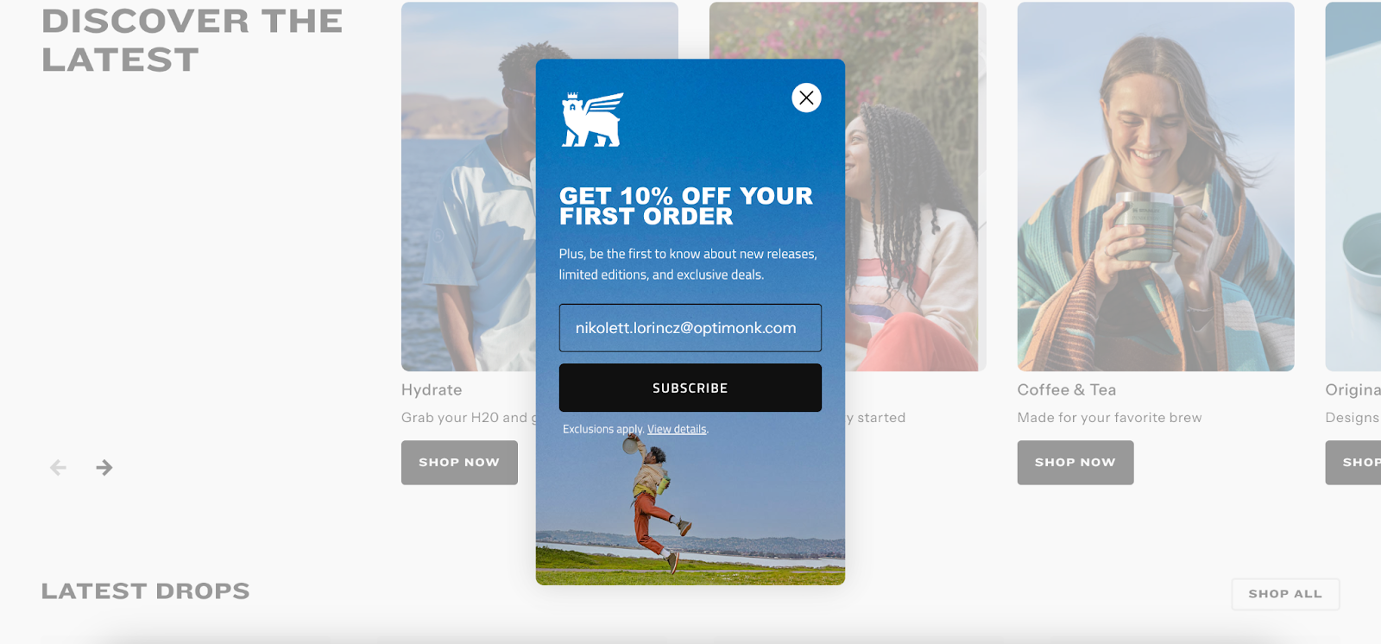
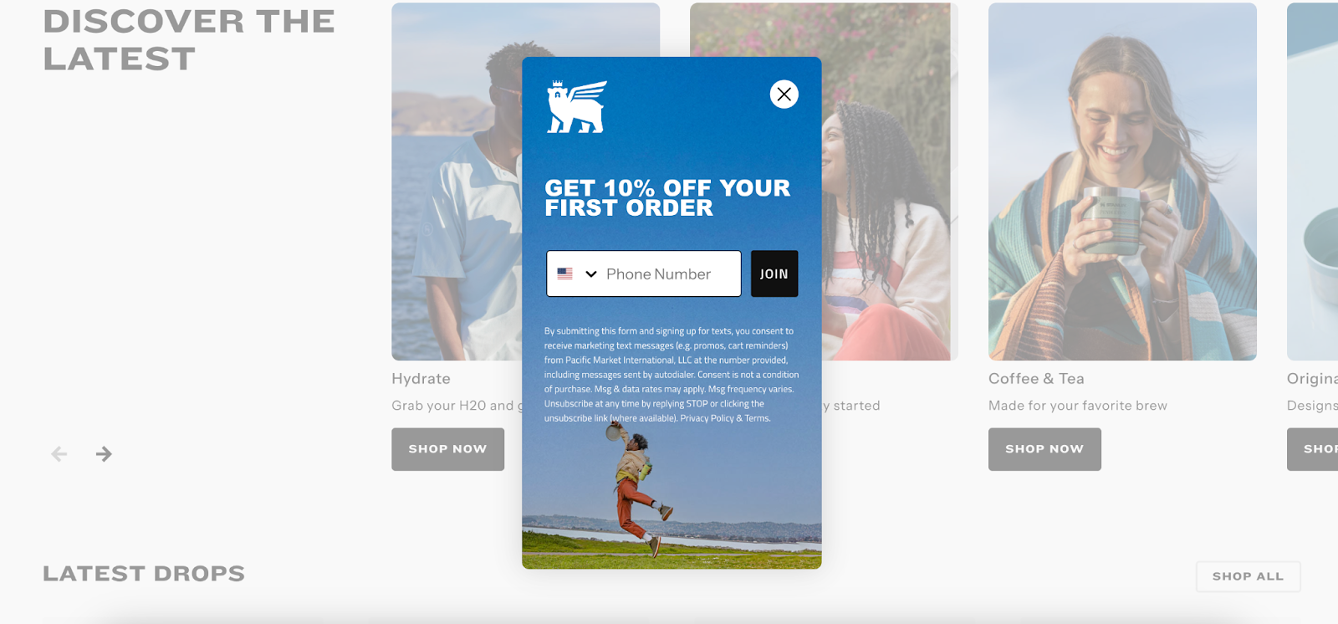
Caraway displays a visually appealing fullscreen popup that promotes free shipping to all new visitors. In addition to asking for an email address, the popup also requests the visitor’s birthday.
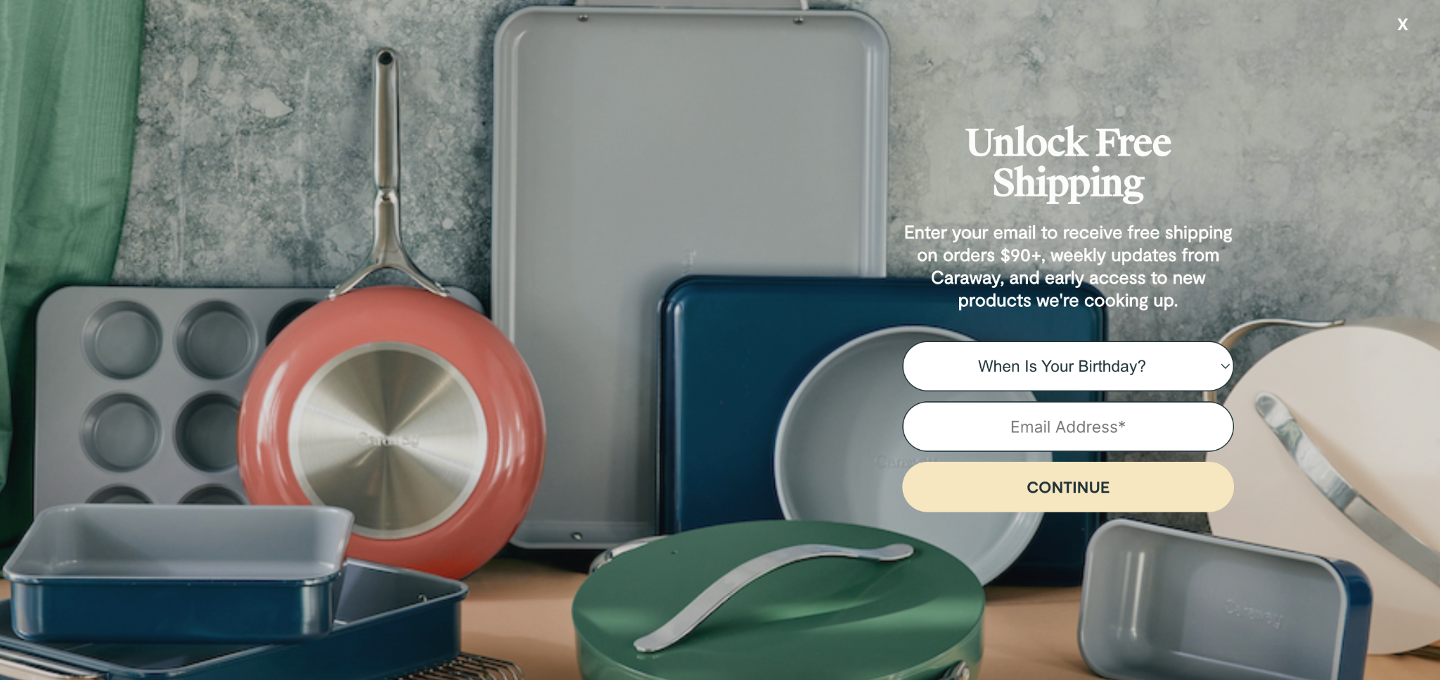
On the second page, it asks for a phone number, ensuring comprehensive data collection for personalized marketing.
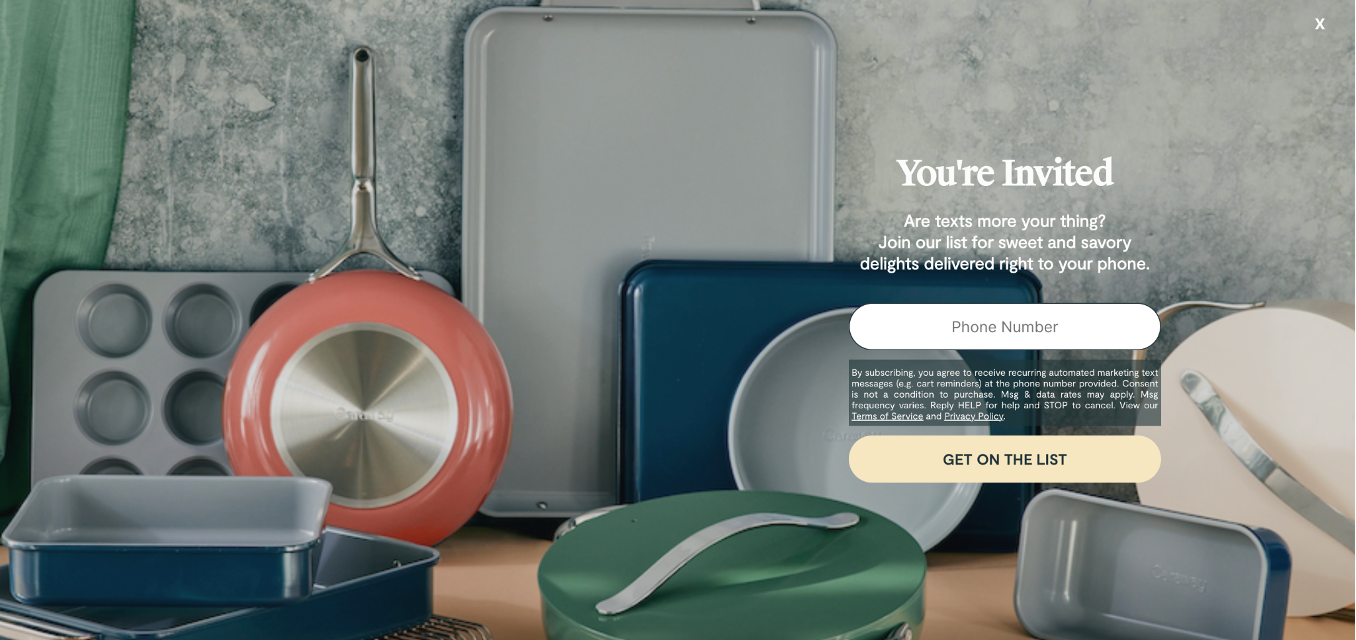
Bubble Skincare offers a 10% discount to new visitors in exchange for their email address through a popup.
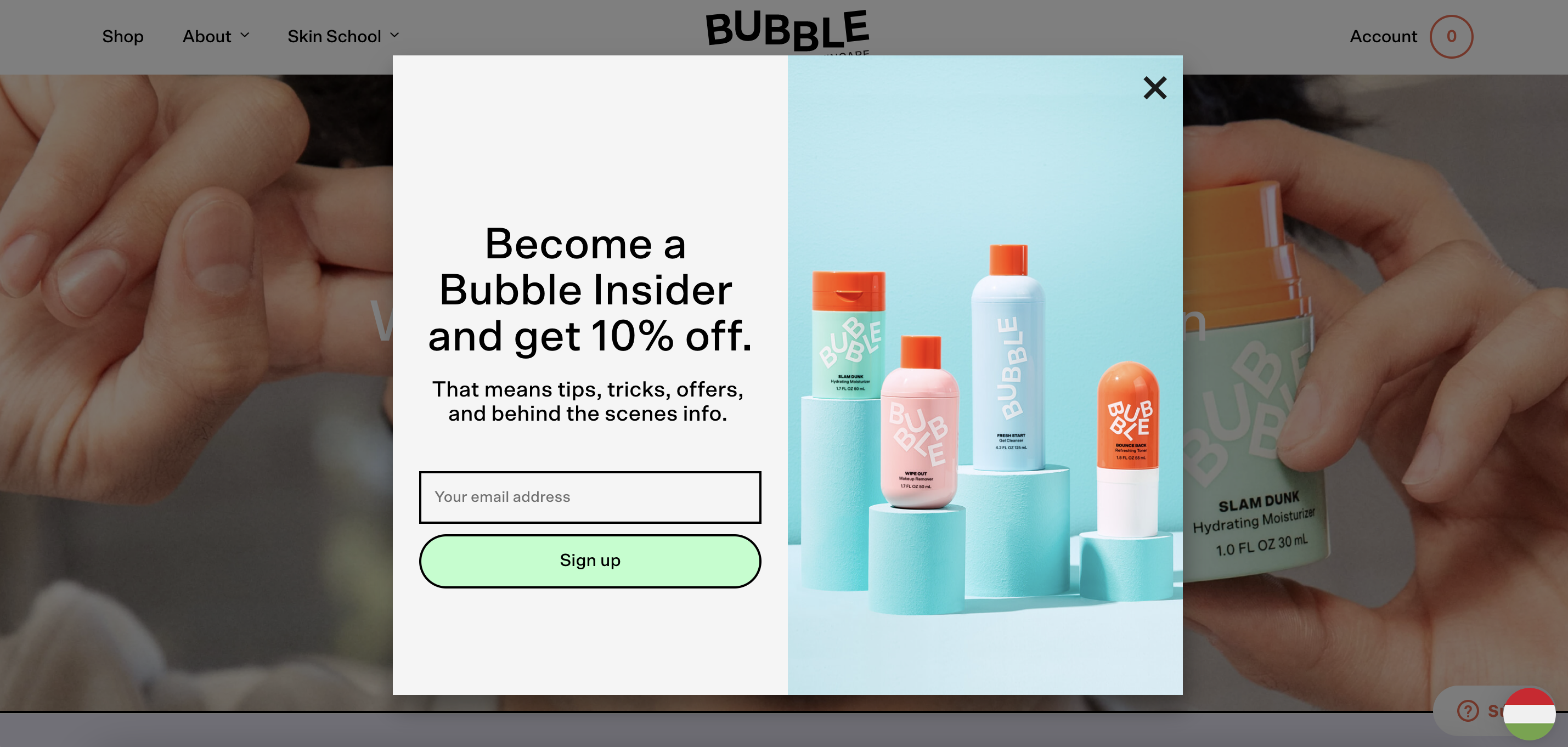
On the second page, they also ask for phone numbers. This multi-step approach helps build both their email and SMS marketing lists, increasing their reach and engagement potential.
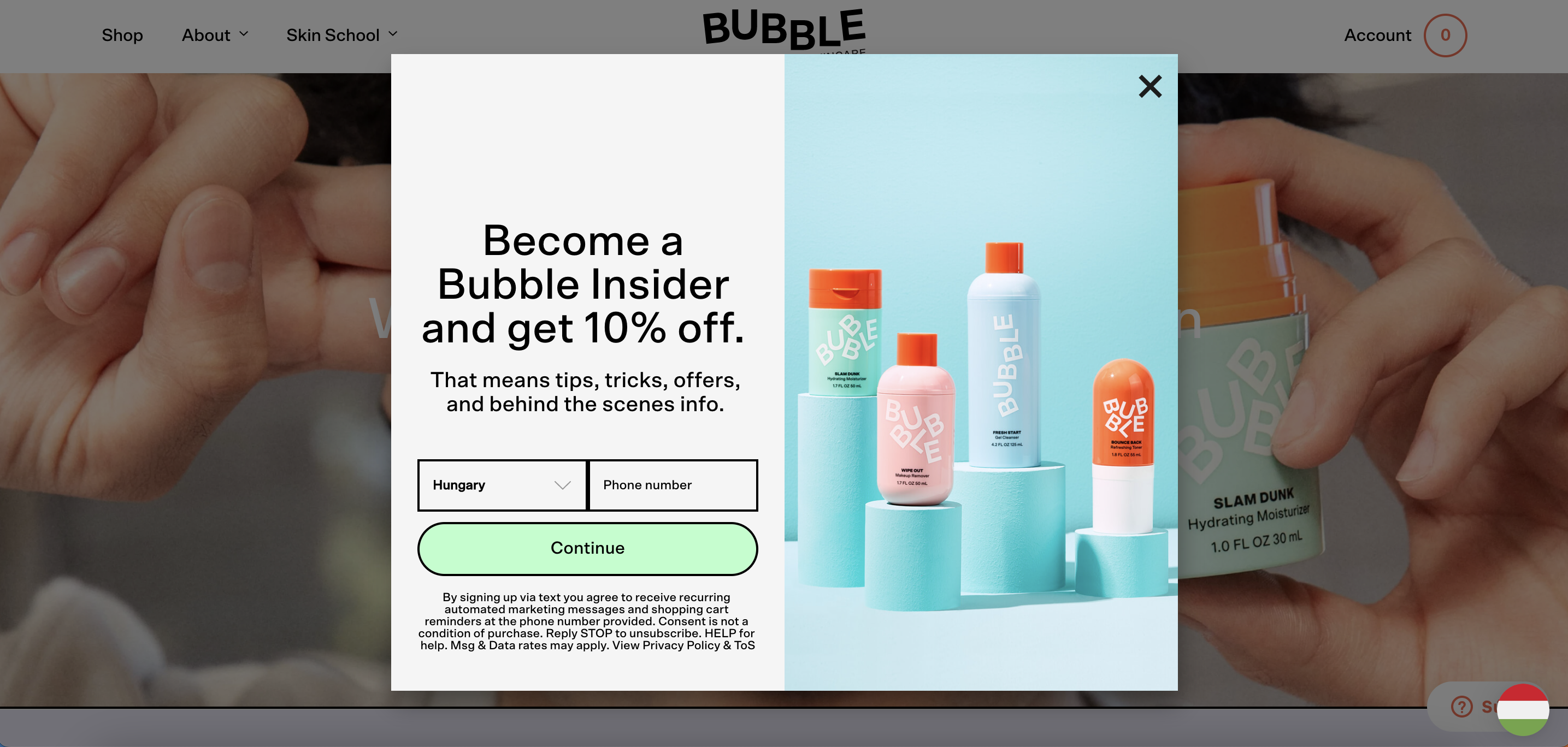
Athletic Brewing opts for a more subtle approach with a sidemessage that promotes $10 off for new customers in exchange for an email signup. This less intrusive method still captures attention without overwhelming the visitor.
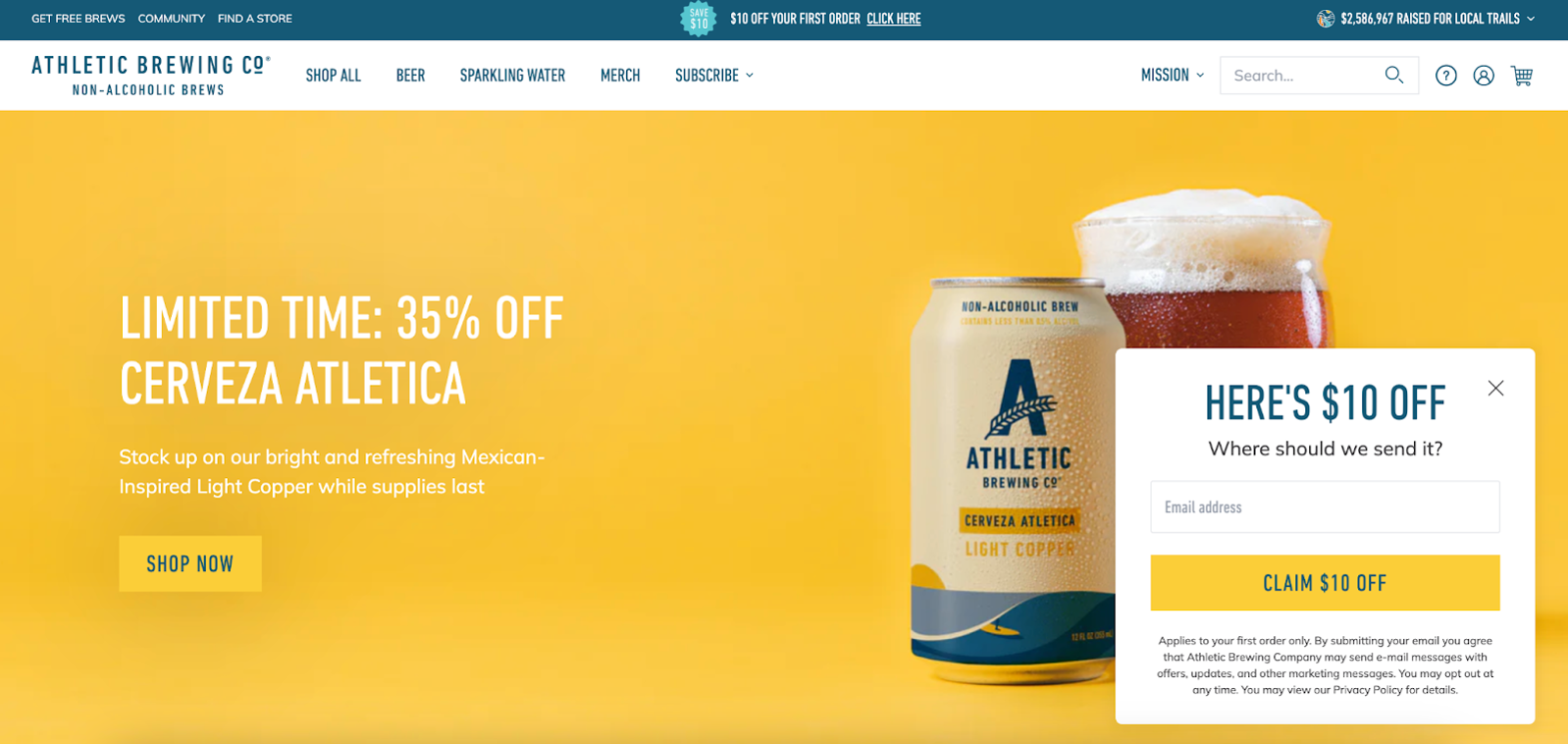
SNOW® takes a unique approach by swapping out the standard 10% discount for a mystery gift. This intriguing offer can entice visitors more effectively and add an element of excitement to the signup process.
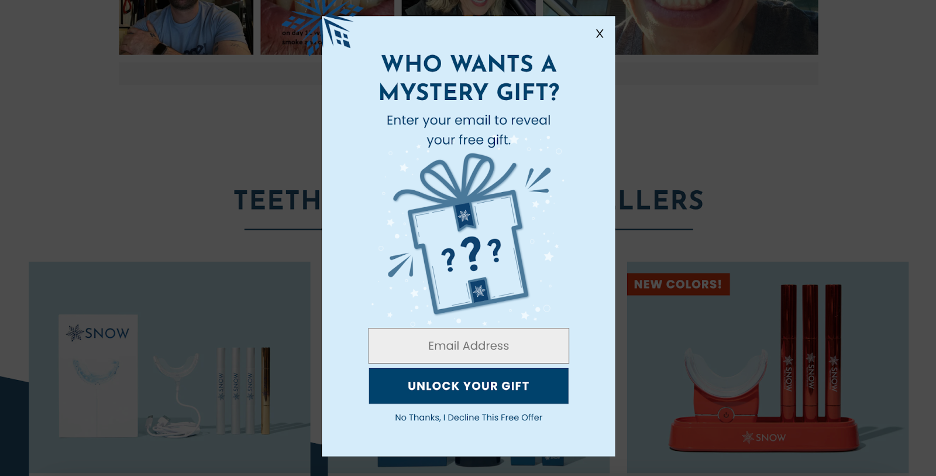
Popups are a powerful tool for building your email and SMS lists, but they need to be implemented thoughtfully to avoid annoying visitors.
By offering enticing incentives, using multi-step strategies, and keeping the popup experience user friendly, you can effectively grow your SMS and email marketing lists.
If you’d like to get started with list-building popups, check out these templates:
Wrapping up
Adopting the right marketing strategy is essential for driving growth and achieving your marketing goals, as you can see from the examples shared in this article.
From identifying the right audience segment to building your email and SMS lists with user-friendly popups, these tips offer a comprehensive approach to boosting your own marketing campaign efforts.
Apply these insights to your marketing strategy and watch your brand thrive!
Want to learn more? Check out our full marketing breakdowns here.
Migration has never been easier
We made switching a no-brainer with our free, white-glove onboarding service so you can get started in the blink of an eye.
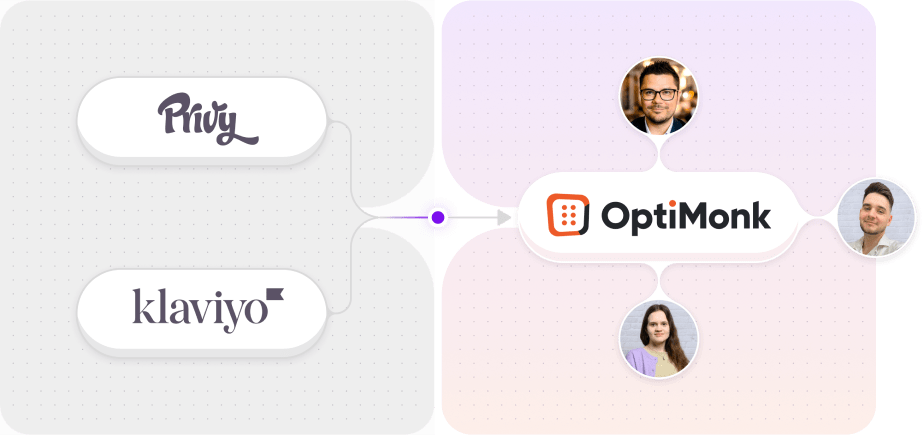
What should you do next?
Thanks for reading till the end. Here are 4 ways we can help you grow your business:
Boost conversions with proven use cases
Explore our Use Case Library, filled with actionable personalization examples and step-by-step guides to unlock your website's full potential. Check out Use Case Library
Create a free OptiMonk account
Create a free OptiMonk account and easily get started with popups and conversion rate optimization. Get OptiMonk free
Get advice from a CRO expert
Schedule a personalized discovery call with one of our experts to explore how OptiMonk can help you grow your business. Book a demo
Join our weekly newsletter
Real CRO insights & marketing tips. No fluff. Straight to your inbox. Subscribe now
Nikolett Lorincz
- Posted in
- Marketing
Partner with us
- © OptiMonk. All rights reserved!
- Terms of Use
- Privacy Policy
- Cookie Policy
Product updates: January Release 2025



